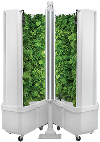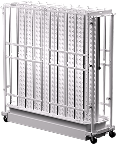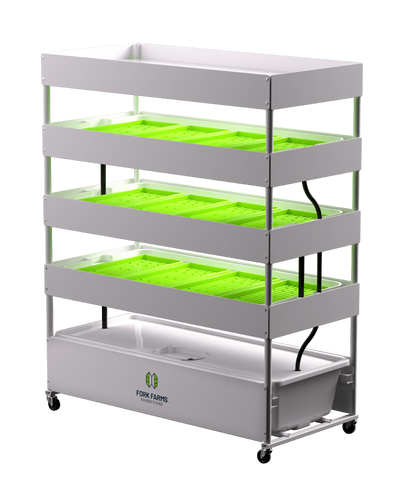Grow Your Own Greens and Know Where Your Food Comes From
Knowing what’s in your food is incredibly important when determining what foods to eat to contribute to your health. This is especially when you have a food allergy or sensitivity. Unfortunately, we live in a world where the source of our food is often hidden behind vague labels or isn’t disclosed at all. Statements like “may contain” make it difficult to know whether certain foods are safe.
In an effort to drive greater food transparency, and increase the accessibility and affordability of fresh, nutritious produce, more schools and communities across the country are turning to growing their own food! It’s been shown to help kids eat healthier and better understand the intricacies of our food systems. A 2017 study of 24 schools reported students who engaged with more hands-on learning opportunities like cooking and gardening ate triple the amount of fruits and vegetables as students enrolled in schools lacking these hands-on offerings.
In fact, a year-long primary school study conducted jointly by Brown County Health Department, Goodwill Industries of North Central Wisconsin, and Fork Farms reported similar results. As part of the program, 21 participants grew lettuce and were given 8- to 15-minute lessons on growing and farming techniques. At the end of the study, the results showed a 33% increase in the consumption of fresh vegetables!
INTRODUCING THE FLEX FARM
To help advance gardening in schools and beyond while also making fresh greens more accessible and affordable throughout the year, the Flex Farm was born! The Flex Farm is an indoor hydroponic system that grows produce year-round quickly right in your own home, school, or workplace.
Flex Farms are significantly more water- and energy-efficient than traditional farming methods, growing more than 394 pounds of fresh produce annually with 98% less water and 98% less electricity. This means better quality food with a higher nutritional value is readily accessible on a consistent basis—and for less than $1.00 per pound!
FLEX FARMING: TIPS TO GET STARTED
Getting started with the Flex Farm is simple and easy to do. The system comes with everything you need to start growing. This includes a self-contained water system, energy-efficient LED light tower, submersible pump, Grower Toolkit, and Supply Box that contains 3 months of supplies. Free, digital resources are available by accessing Farmative. Through Farmative, you will have access to growing resources and programming tools, place grow supply orders directly through your account, and engage with other growers in the community.
When the Flex Farm arrives, the first thing you’ll need to do is decide where the system will be located. The ideal spot is in a temperature-controlled room with at least 3 feet by 6 feet of level, hard floor space, and a standard ceiling height, positioned near a three-prong electrical outlet. It’s a good idea to choose a place with a nearby water source.
The next step is to plant your seeds. Seeds are planted in a medium called rockwool. While waiting for the seeds to sprout, you can set up the Flex Farm for growing. This includes adding water, nutrients, balancing pH, and setting the light timer. After the seeds germinate, each rockwool cube is transplanted into the Flex Farm. After 4 weeks of growing, you are able to harvest 25+ pounds of your favorite fresh leafy greens and produce.
THE CASE FOR EATING LOCAL
In addition to the aforementioned benefits for kids, growing your own vegetables lets you control the conditions they grow under, which increases their nutritional quality since they’re not losing nutrients from having to travel hundreds or thousands of miles. Knowing exactly who is handling the food and how offers the added benefit of reducing the guesswork for those managing food allergies!
Indoor gardening further provides the flexibility to grow a variety of crops throughout the year. This makes it perfect for those who live in cold weather climates or do not have the space to grow outdoors. Indoor gardening also provides you with the ability to know what your fresh food has been exposed to because almost everything is controlled—from the amount of nutrients to exposure to light, you provide your plants with everything they need to thrive.
As an added bonus, did you know that gardening can help serve as a form of therapy? For the food allergy community, this is especially beneficial as many children and individuals with food allergies or sensitivities have anxiety around food. When you grow your own food, you are inherently learning more about fresh produce, how to take care of it, preserve it, eat it, and ultimately, you’re able to share that knowledge (and likely food!) with the people in your family and community.
If you have an opportunity to plant a garden (indoors or out!), we hope you enjoy all the benefits that eating locally and growing your own food brings.
Originally posted in Allergy Amulet Blog
Authors: Alyssa Scriven, Executive Support Leader, & Megan Pirelli, Brand Content Director
Published: 2023
Is the Flex Farm right for you?
Connect with an expert member of our team and let’s work together to bring your growing experience to life.
Important Links:
























